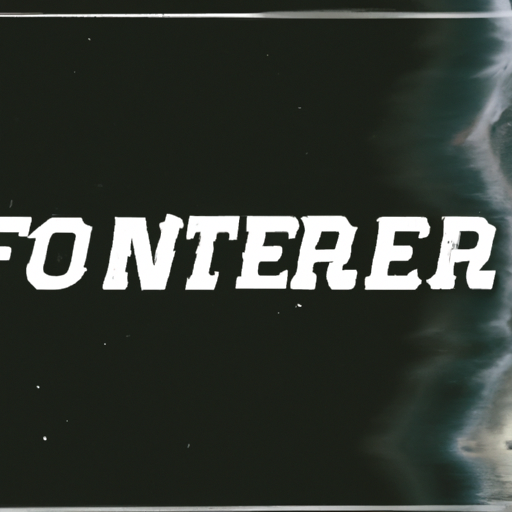-
Table of Contents
- Introduction
- Exploring the NFT Applications: From Art Ownership to Gaming Gold
- Collectible Craze: The Role of NFTs in the Future Market
- Gaming Gold: How the NFT Boom is Transforming the Gaming Industry
- Art Ownership in the Era of NFT Boom: A Revolutionary Change
- Understanding the NFT Boom: A Deep Dive into Its Usage and Applications
- Q&A
- Conclusion
“Unlocking the Future: NFT Boom, Usage & Applications Redefined!”
Introduction
The NFT Boom: Usage & Applications Unlocked is a comprehensive exploration into the explosive growth and diverse applications of Non-Fungible Tokens (NFTs) in the digital world. This phenomenon has revolutionized the way we perceive and interact with digital assets, providing a new level of ownership and value to digital content. From art and music to real estate and virtual goods, NFTs have unlocked a myriad of possibilities, transforming various industries and creating a new digital economy. This introduction delves into the usage of NFTs, their applications, and the potential they hold for the future.
Exploring the NFT Applications: From Art Ownership to Gaming Gold
The recent boom in non-fungible tokens (NFTs) has opened up a world of possibilities, unlocking a myriad of applications that extend far beyond the realm of digital Art Ownership. NFTs, unique digital assets that are stored on a blockchain, have the potential to revolutionize various industries, including gaming, real estate, and even intellectual property rights.
The most well-known application of NFTs is in the art world. Digital artists are now able to tokenize their work, creating a unique digital certificate of ownership that can be bought and sold. This not only provides a new revenue stream for artists but also offers a solution to the long-standing issue of art forgery. With NFTs, the provenance of a piece of art is indisputable, as the blockchain records every transaction and ownership change.
However, the potential of NFTs extends far beyond digital art. In the gaming industry, for example, NFTs are being used to create unique in-game items. These items, which can include anything from weapons to characters, can be bought, sold, and traded by players, adding a new dimension to the gaming experience. This not only provides a new revenue stream for game developers but also allows players to truly own their in-game assets.
In the real estate sector, NFTs are being used to represent ownership of virtual land in digital worlds. This concept, while seemingly futuristic, is already a reality in platforms like Decentraland, where users can buy, sell, and trade virtual land parcels. This opens up a whole new world of possibilities, from virtual real estate development to digital tourism.
Moreover, NFTs have the potential to revolutionize the way we manage and trade intellectual property rights. Musicians, for example, could tokenize their songs, allowing them to sell unique copies directly to their fans. This would not only provide a new revenue stream for artists but also give fans a unique way to support their favorite musicians.
Furthermore, NFTs could be used to represent ownership of physical assets, such as cars or houses. This would allow these assets to be traded in a similar way to digital assets, potentially simplifying the buying and selling process.
Despite the potential of NFTs, it’s important to note that the market is still in its early stages and comes with its own set of challenges. These include issues related to scalability, environmental impact, and regulatory uncertainty. However, as the technology matures and these issues are addressed, the potential applications of NFTs are likely to become even more diverse and impactful.
In conclusion, the NFT Boom has unlocked a myriad of applications that extend far beyond digital Art Ownership. From gaming to real estate, and from intellectual property rights to physical asset ownership, NFTs have the potential to revolutionize various industries. As the technology matures and the market evolves, we can expect to see even more innovative uses for NFTs in the future.
Collectible Craze: The Role of NFTs in the Future Market
The recent boom in non-fungible tokens (NFTs) has taken the digital world by storm, unlocking a myriad of usage and applications that are set to revolutionize the Future Market. NFTs, unique digital assets that are stored on blockchain, have become the latest Collectible Craze, offering a new way for creators to monetize their work and for collectors to invest in digital assets.
The rise of NFTs can be attributed to their unique properties. Unlike cryptocurrencies such as Bitcoin, which are fungible and can be exchanged on a like-for-like basis, NFTs are unique and cannot be exchanged on a like-for-like basis. This uniqueness gives NFTs their value, as each token can represent ownership of a specific item or piece of content. This has opened up a whole new world of possibilities for digital ownership, with NFTs being used to represent everything from digital art and music to virtual real estate and virtual goods.
One of the most significant applications of NFTs is in the world of digital art. Artists can now tokenize their work, creating a digital certificate of ownership that can be bought and sold. This not only provides a new revenue stream for artists but also offers a solution to the long-standing problem of digital art piracy. With NFTs, artists can prove ownership of their work and buyers can verify the authenticity of the artwork they are purchasing.
Beyond digital art, NFTs are also being used in the world of gaming. Virtual goods such as skins, weapons, and other in-game items can now be tokenized and traded on the blockchain. This gives gamers a new way to monetize their gaming experience, while also creating a more immersive and interactive gaming experience.
Moreover, NFTs are also making waves in the world of music. Musicians can now tokenize their music, selling unique copies of their songs or albums as NFTs. This not only provides a new revenue stream for musicians but also allows fans to own a unique piece of their favorite artist’s work.
The potential applications of NFTs extend far beyond the realms of art, gaming, and music. NFTs could also be used to represent ownership of real-world assets, such as real estate or physical goods. This could revolutionize the way we buy and sell assets, making the process more transparent, secure, and efficient.
However, as with any new technology, NFTs are not without their challenges. Issues such as scalability, interoperability, and environmental impact need to be addressed. Moreover, the legal and regulatory framework around NFTs is still in its infancy, and there are questions around issues such as copyright and ownership that need to be resolved.
Despite these challenges, the potential of NFTs is undeniable. As the technology matures and these issues are addressed, we can expect to see NFTs play an increasingly important role in the Future Market. The Collectible Craze may just be the beginning. With their unique properties and wide range of applications, NFTs have the potential to redefine digital ownership and revolutionize the way we buy and sell assets.
Gaming Gold: How the NFT Boom is Transforming the Gaming Industry

The recent boom in non-fungible tokens (NFTs) has unlocked a plethora of usage and applications, particularly in the gaming industry. This digital revolution is transforming the gaming landscape, creating a new paradigm where virtual assets have real-world value.
NFTs, unique digital assets that are stored on a blockchain, have been around for a few years. However, it’s only recently that they’ve gained significant traction, thanks to high-profile sales like the $69 million digital artwork by Beeple. This surge in interest has led to an exploration of NFTs’ potential in various sectors, with the gaming industry standing out as a prime beneficiary.
In the traditional gaming model, players spend countless hours building up characters, acquiring virtual goods, and unlocking achievements. However, these assets typically remain confined within the game’s ecosystem and have no value outside it. NFTs are changing this dynamic, allowing gamers to own, trade, and profit from their in-game assets in the real world.
The integration of NFTs into gaming platforms is creating a new genre of games often referred to as ‘play-to-earn.’ In these games, players can earn NFTs through gameplay, which they can then sell or trade on various marketplaces. This model not only provides an additional revenue stream for gamers but also adds a new layer of depth and engagement to the gaming experience.
One of the pioneers in this space is the blockchain-based game CryptoKitties, where players can buy, breed, and sell virtual cats, each represented as an NFT. Another notable example is Axie Infinity, a Pokémon-inspired game where players can earn tokens by battling, breeding, and trading digital pets. These games have proven to be incredibly successful, with some players reportedly earning a full-time income from their activities.
The use of NFTs in gaming also opens up exciting possibilities for cross-platform interoperability. In the future, a weapon earned in one game could potentially be used in another, or a character developed in one virtual world could be transferred to another. This level of interoperability could revolutionize the gaming industry, breaking down the walls between different gaming platforms and creating a more interconnected and immersive gaming universe.
However, the integration of NFTs into gaming is not without its challenges. There are concerns about the environmental impact of NFTs, given the high energy consumption of blockchain technologies. Additionally, there are issues related to the regulation and security of NFT transactions, as well as the potential for market manipulation.
Despite these challenges, the potential of NFTs in the gaming industry is undeniable. As technology continues to evolve, we can expect to see more innovative applications of NFTs, further blurring the lines between the virtual and real worlds. The NFT Boom is not just a passing trend; it’s a transformative force that’s reshaping the gaming industry and redefining what’s possible in the digital realm.
In conclusion, the NFT Boom is unlocking new usage and applications in the gaming industry, transforming the way we play, trade, and engage with games. As we continue to explore this exciting frontier, one thing is clear: the game has only just begun.
Art Ownership in the Era of NFT Boom: A Revolutionary Change
The advent of blockchain technology has brought about a revolutionary change in the world of Art Ownership, particularly with the recent boom in Non-Fungible Tokens (NFTs). This digital innovation has unlocked new usage and applications, transforming the way we perceive, purchase, and possess art.
NFTs are unique digital assets that represent ownership of a specific item or piece of content, stored on a blockchain, the same technology that underpins cryptocurrencies like Bitcoin and Ethereum. Unlike these cryptocurrencies, however, NFTs are not interchangeable for other tokens in the same way. Each NFT has a digital signature that distinguishes it from other tokens, making it a one-of-a-kind asset.
In the realm of art, this uniqueness is particularly significant. Traditionally, Art Ownership has been a physical affair, involving tangible pieces of work that can be touched, moved, and displayed. However, the rise of NFTs has introduced a new form of Art Ownership, one that exists entirely in the digital realm. This shift has not only democratized Art Ownership but also expanded the possibilities for artists and collectors alike.
Artists, for instance, can now tokenize their work as NFTs, providing them with a new avenue for selling their creations. This process involves minting a digital work of art into an NFT, which is then stored on the blockchain. Once minted, these digital artworks can be bought, sold, and traded on various online platforms. This has opened up a global market for artists, allowing them to reach a wider audience and gain greater exposure for their work.
Moreover, the blockchain technology that underpins NFTs also ensures the provenance and authenticity of the digital artwork. Each transaction made with an NFT is recorded on the blockchain, creating a transparent and immutable record of ownership. This eliminates the risk of forgery and fraud, which have long plagued the traditional art market.
For collectors, NFTs offer a new way to invest in art. Digital art pieces represented by NFTs can be bought and sold like traditional artworks, with their value fluctuating based on demand. Some NFT artworks have even fetched astronomical prices at auction, highlighting the potential for high returns on investment. Furthermore, owning an NFT also grants the holder certain rights, such as the ability to display the digital artwork in virtual galleries or other digital spaces.
However, it’s important to note that the NFT Boom is still in its early stages, and like any emerging market, it comes with its own set of challenges and risks. These include issues related to copyright infringement, environmental concerns over the energy consumption of blockchain technology, and the volatility of the NFT market.
Despite these challenges, the impact of NFTs on Art Ownership cannot be overstated. By enabling digital ownership of art, NFTs have ushered in a new era in the art world, one that is more inclusive, transparent, and innovative. As the technology continues to evolve, so too will the ways in which we create, collect, and cherish art. The NFT Boom, therefore, represents not just a trend, but a transformative shift in the art world, unlocking new possibilities for artists and collectors alike.
Understanding the NFT Boom: A Deep Dive into Its Usage and Applications
The recent surge in the popularity of non-fungible tokens (NFTs) has taken the digital world by storm, marking a significant shift in how we perceive and value digital assets. This NFT Boom has unlocked a plethora of usage and applications, transforming various industries and creating new opportunities for artists, creators, and investors alike.
NFTs, at their core, are unique digital assets that are stored on a blockchain, the same decentralized technology that underpins cryptocurrencies like Bitcoin and Ethereum. However, unlike these cryptocurrencies, NFTs are unique and cannot be exchanged on a like-for-like basis. This uniqueness and the ability to verify authenticity have made NFTs particularly appealing for the art world.
The art industry has been one of the most prominent beneficiaries of the NFT Boom. Artists can now tokenize their artwork into NFTs and sell them directly to consumers, bypassing traditional intermediaries like galleries and auction houses. This not only democratizes the art industry but also provides artists with a new revenue stream. The sale of Beeple’s artwork for a staggering $69 million at Christie’s auction house exemplifies the potential of NFTs in the art world.
However, the application of NFTs extends far beyond the art industry. They are being used in the world of sports, where teams and leagues are tokenizing sports memorabilia and selling them as NFTs. The NBA, for instance, has launched NBA Top Shot, a platform where fans can buy, sell and trade officially licensed NBA collectible highlights. These digital collectibles have generated over $230 million in sales, demonstrating the immense potential of NFTs in the sports industry.
In the realm of music, NFTs are revolutionizing the way musicians monetize their work. Musicians can now tokenize their music and sell it as NFTs, providing them with a new avenue to earn revenue and connect with their fans. Kings of Leon, for instance, released their latest album as an NFT, becoming the first band to do so.
Moreover, NFTs are making their mark in the virtual real estate market. Virtual worlds like Decentraland and Cryptovoxels allow users to buy, sell, and trade virtual land and properties as NFTs. This has given rise to a new form of real estate investment, where investors can reap substantial profits from the appreciation of virtual land values.
The NFT Boom has also unlocked new possibilities in the gaming industry. In-game assets like skins, weapons, and characters can now be tokenized and traded as NFTs, providing gamers with ownership rights over their digital assets. This not only enhances the gaming experience but also creates a new economy within the gaming ecosystem.
In conclusion, the NFT Boom has ushered in a new era of digital ownership, unlocking a myriad of usage and applications across various industries. From art and music to sports and gaming, NFTs are transforming the way we create, trade, and own digital assets. As the technology continues to evolve, we can expect to see even more innovative applications of NFTs, further revolutionizing the digital landscape.
Q&A
1. Question: What is the NFT Boom?
Answer: The NFT Boom refers to the sudden and rapid increase in the popularity and use of Non-Fungible Tokens (NFTs) in various sectors such as art, music, real estate, and gaming.
2. Question: How are NFTs used in the art industry?
Answer: In the art industry, NFTs are used to digitize artwork and sell it on blockchain platforms. This allows artists to sell their work directly to consumers, bypassing traditional intermediaries like galleries or auction houses.
3. Question: What are some applications of NFTs in the music industry?
Answer: In the music industry, NFTs can be used to sell digital music tracks, albums, or concert tickets. They can also be used to represent ownership of a piece of a song, allowing fans to earn royalties from their favorite music.
4. Question: How are NFTs used in the real estate sector?
Answer: In the real estate sector, NFTs can represent ownership of a property. This allows for the buying, selling, and trading of real estate in a digital format, potentially simplifying the transaction process and making it more transparent.
5. Question: What is the role of NFTs in the gaming industry?
Answer: In the gaming industry, NFTs can represent in-game assets such as characters, items, or real estate. This allows players to truly own their in-game assets and potentially profit from them by selling or trading them on NFT marketplaces.
Conclusion
The NFT Boom has unlocked a plethora of usage and applications, revolutionizing the digital world. It has provided a new platform for artists, musicians, and creators to monetize their work in a decentralized manner. It has also opened up opportunities in real estate, gaming, and collectibles, allowing for the ownership and trading of unique digital assets. However, the boom has also raised concerns about environmental impact, copyright infringement, and market volatility. Therefore, while the NFT Boom has unlocked significant potential, it also necessitates careful regulation and ethical considerations.



